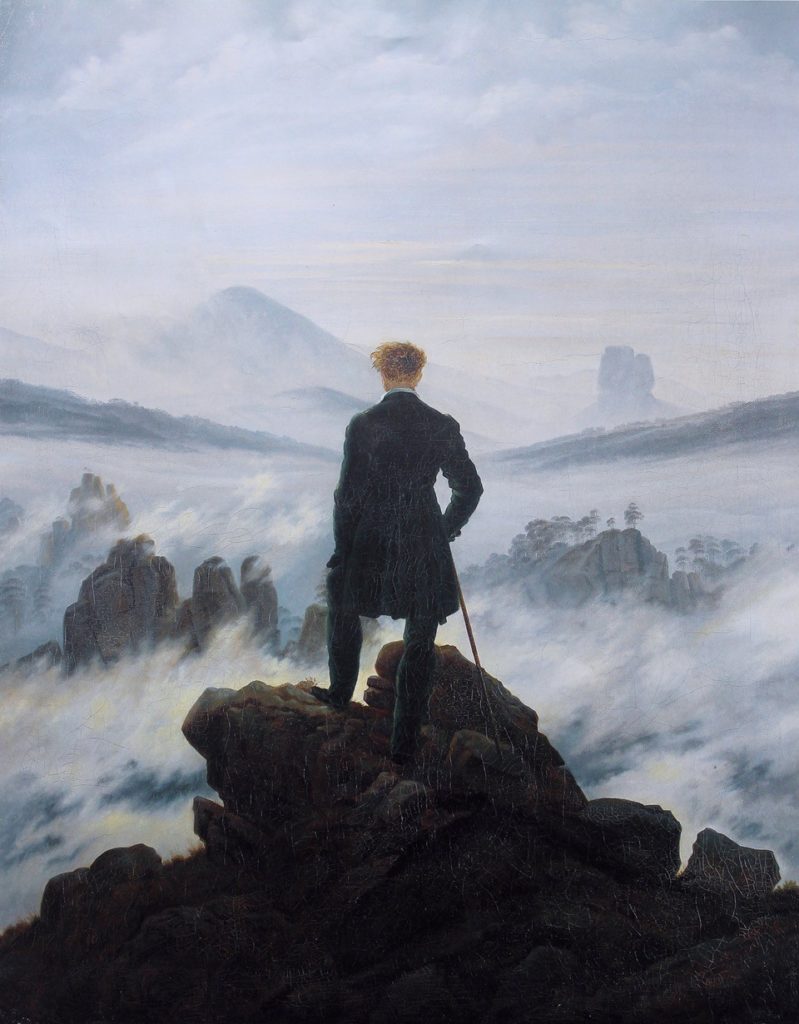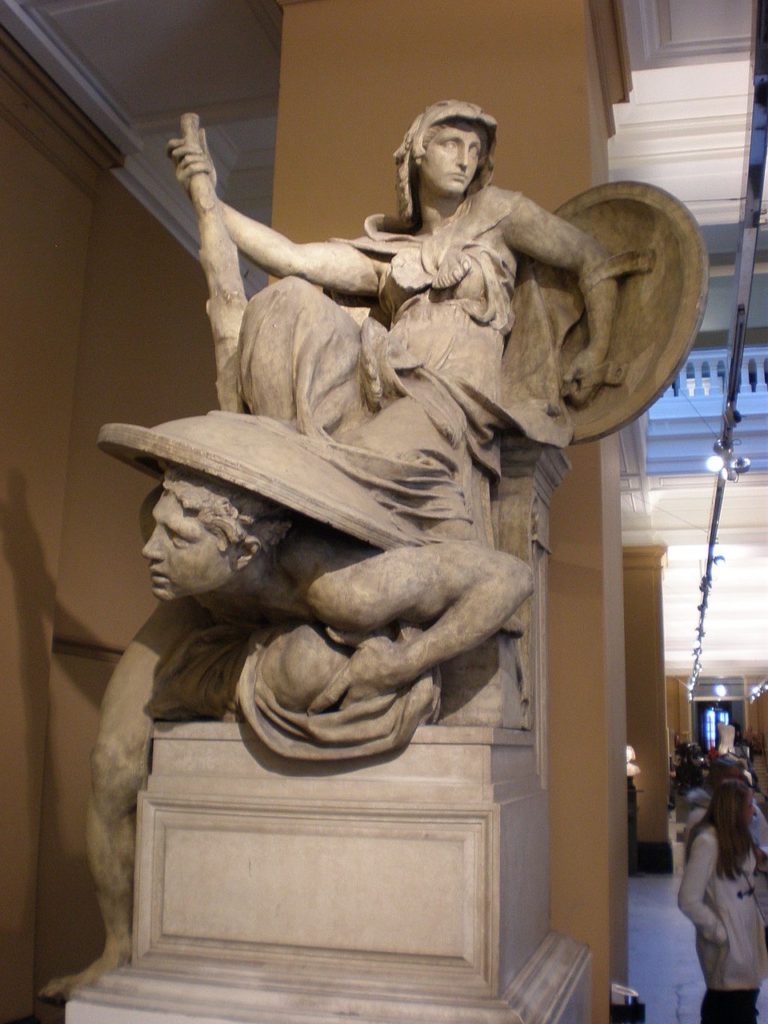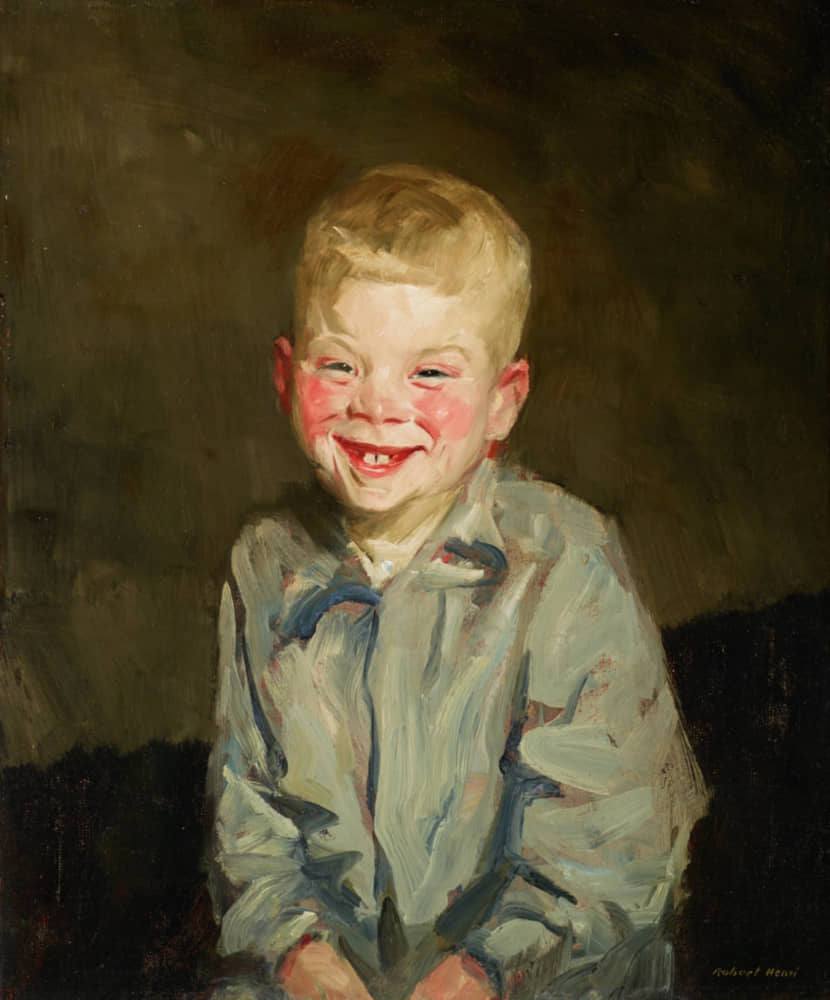Well, chaps, one or two of these are likely to be over the heads of the common herd, so I am assisting with a few select images. The first joke alludes to a famous Caspar Friedrich painting. Ernest Trobridge designed fantastic houses in unfashionable petit-bourgeois London suburbs like Kingsbury. Hands up who’d prefer to live in one of these rather than an overpraised Le Corbusier villa, baking in summer, freezing in winter, with a roof that constantly leaked?
Talking of over-praise, someone all of you will have heard of (and I bet you wish you hadn’t) is Patti Smith. Excellent LP in Horses, but she should have been confined to her stables these past 40 years. I have a good mind to start a campaign to get her expelled from the Rock n’ Roll Hall of Fame. The juxtaposition of Alfred Stevens’s Valour and Cowardice and the endearing Oscar the Grouch (clearly inspired by Diogenes), is too irresistible not to reproduce. I wanted to include this reference in the entry I penned on Stevens for the Grove Dictionary of Art, but the editor said no, probably because many readers of the GDoA wouldn’t know their Sesame Street. But they do have a sense of humour, as attested by volume 19 of the series, “Leather to Macho.” Furthermore, at my insistence they included an entry on Maurice Sendak. Bless! I will squeeze in an extra joke in the hope that Nirmal won’t notice [Ed. he noticed!]. You didn’t know this but Maurice Sendak had aspirations as a songwriter as well as an illustrator. So he sent his idol, Elvis Presley, his new song. Unfortunately Elvis was distinctly unimpressed, and told Colonel Parker: “Return to Sendak!”
How might one best describe an unsuspecting student exposed to the New Art History in c. 1990? A Wanderer in the Sea of Fog.

A great G.F. Watts painting fetched a record price at Sotheby’s yesterday. The Sun’s headline: “500,000 Watts!”
Exhibitions they would never dare put on:
Popular vs Art World Realism: W.P. Frith and Edouard Manet
Bastien-Lepage vs. The Impressionists
Battle of the Styles: Le Corbusier and Ernest Troubridge
Miami Baroque: The Architecture of Maurice Lapidus
Good and bad pottery: Alan Caiger-Smith and Grayson Perry
Prince Charles and the Architecture of Good Manners
Making Britain Great Again: The Margaret Thatcher Era (V&A)
Contrasted Bodies: Alberto Giacometti and Fernando Botero
(or maybe Ample Bodies: Gaston Lachaise and Fernando Botero)
The Male Gaze: Alberto Vargas and Mel Ramos.

And major retrospectives of any of the following:
Félicien Rops; Frank Brangwyn (outside Brugge); Frank O. Salisbury; Rowland Hilder; Albert Speer; John Bratby; Rolf Harris; Beryl Cook; Thomas Kinkade; Margaret Keane.
And major exhibitions I hope will never be put on: Bob Dylan; George W. Bush; the watercolours of Prince Charles; Winston Churchill, painter; anything by or about Patti Smith or Derek Jarman.
Great art historical juxtapositions somehow avoided by curators:
William Holman Hunt, The Scapegoat; Robert Rauschenberg, Monogram.
Edward Burne-Jones, The Golden Stairs; Marcel Duchamp, Nude Descending a Staircase, No. 2.
Pablo Picasso, Guernica; Frank O. Salisbury, The Coronation of King George VI (both 1937).
Alfred Stevens, Valour and Cowardice; Sesame Street Workshop, Oscar the Grouch.

Alfred Stevens, Valour and Cowardice, 1857-1866. 
Jim Henson, Oscar the Grouch, 1969.
What did a French photographic connoisseur say when he was shown a Fox Talbot calotype? “C’est magnifique, mais ce n’est pas Daguerre!”
What is Rodin’s yummiest sculpture? The Burgers of Calais.
Art to charm your vegan friends: The Butcher’s Shop (Annibale Carracci); almost anything by Snyders, Oudry or Damien Hirst; Carcass of Beef (Chaim Soutine); and of course, Figure with Meat (Francis Bacon).
Added Joke (Rather, Five Added Jokes! Ed.)
The singer Shirley Bassey had an intellectual side, little known to her many fans. She was an avid reader of British poetry of the 1930s. Hence her famous hit, “Hey, Big Spender!”
A Hitler witticism: “Rome wasn’t built in a day, but Röhm was destroyed in a night!”
13th century political gossip: “My friend Lance is a bit of a leftie… Doesn’t believe those vilains are villains and he signed the Magna Carta, don’t you know!”
A famous politically correct Anglo-Saxon: Hereward the Woke.
Dr Mark Stocker is a former academic and art curator who lives in New Zealand. Besides his jokes, he has 230 marginally more serious publications, many of which are on Victorian public monuments, numismatics and New Zealand art. His book When Britain Went Decimal: The Coinage of 1971 will be published by the Royal Mint in 2021.
The featured image shows, “The Laughing Boy (Jopie van Slouten),” by Robert Henri; painted in 1910.
